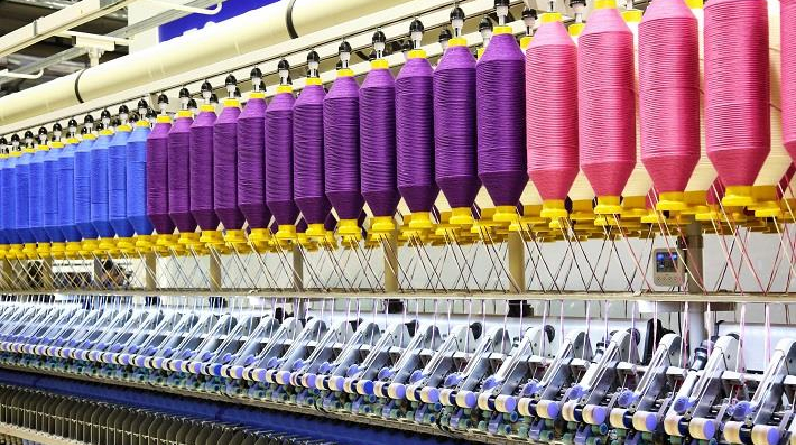The Future of Sustainable Fashion and Textiles Lies in On-Demand Production

It is critical to make the textile and clothing industry more sustainable by making it a cleaner, more responsive, and more responsible enterprise that allows for unrestrained expression of creativity. To rise to this challenge, we must embrace the digital revolution and shift to just-in-time manufacturing, which will allow us to reduce waste and increase the variety of products and services we offer.
Since the advent of the internet, there has been a dramatic shift in the relationships between brands, designers, and consumers. Brands that were too slow to adapt to the changing retail landscape caused by the global economic crisis failed to survive. There are more resources than ever before to help creative people design, fulfil, and market their ideas, whether they are starting a business or creating for their own enjoyment. Social media, viral videos, word of mouth, and the proliferation of creative apps are all driving forces in today’s market. And perhaps most importantly, there is a widespread call for more sustainable production practises; people are actively looking to be better stewards of our environment, and consumers are increasingly spending according to their own values. This trend has given rise to entirely new industries focused on responsible, eco-conscious manufacturing.
However, the fashion and textile industries are major contributors to environmental degradation, accounting for 10% of all carbon emissions due to our efforts to dress the world’s population. It is estimated that the treatment and dying of textiles account for 25% of all freshwater pollution. Our individual carbon footprint is only a small part of the overall problem. The financial incentives for doing something about it are commensurate with the ethical ones. As much as 30 percent of all clothing manufactured is wasted. I’ve read about major companies and high fashion labels that destroy inventory or write it off, sending tonnes of items to landfills or the clearance rack and losing billions of dollars in the process.
Traditional models of outsourcing have placed designers and consumers on opposite sides of the globe from the complex machinery that meets their needs. To me, conventional supply chains aren’t suited to the dynamic needs of today’s hyper-connected millennials and Gen Zers. Lacking in openness can leave you exposed to disruptions and with stock that will never move. You may find that a product is no longer trendy by the time it reaches your shores, but it may be very popular in another part of the world. Put aside the resources expended in making and vetting samples.
As the head of an on-demand technology firm, I think the greatest strengt
Pros of Having Content Created When You Need It

h of digital production is its ability to invert the traditional supply-and-demand model. In the past, you would make a stockpile and then try to move it as fast as possible based on forecasts. We no longer have to take chances on what might become popular because of the ease with which we can now produce an infinite number of applications.
In this age of instant information and boundless imagination, on-demand production has emerged as a powerful tool. It’s the natural progression of a digital marketplace that is globally connected, data-driven, and ideal for addressing the industry’s economic and sustainability challenges. With the advent of digital production, people no longer have to hold back their imaginations or suppress their individuality.
And you only produce what people actually want to buy, so there’s no need for excessive inventory or extra time spent on tasks that don’t add much to your bottom line. While reducing supply chains, eliminating complex logistics and transport waste, and using sustainable pigment-based inks and consumables, you can customise, personalise, and think outside the box to respond to unexpected demand without compromising quality or profit margins.
Making the Move to On-Demand Services
If you want to maximise the benefits of on-demand production, you need to collect as much market information as possible, whether that’s through social listening, spotting trends, or being ready to seize new opportunities as they arise. The future can be altered through digital transformation. Completely digitising the consumer and production experience provides the responsiveness, flexibility, and agility necessary to match supply with demand.
Businesses that have relied on analogue methods for a long time may need to make some significant adjustments as they transition to digital systems. For the upkeep of cutting-edge technology, a fresh set of abilities is essential (aligning with an increasingly digital workforce). Reduced material waste and increased return on investment are two of the main benefits of moving toward on-demand production, which also creates new avenues for product and service development. It is possible to train your workforces to do more and scale businesses sustainably by creating more product and profit with less time, materials, energy, and production footprint.
As we begin the shift to on-demand production, there are a few focal points we should keep in mind. Embrace digital, end-to-end processes. Businesses that sell to both businesses and consumers (B2B and B2C) are exploring ways to modify their production processes in order to better serve their customers by responding to their needs and taking advantage of emerging market trends.
See Also: What I’ve Learned About My Creative Process in 4 Days of Daily Practice
For higher profit margins, you should streamline your operations and keep as little stock as possible. Onshoring and nearshoring go hand in hand with this. McKinsey & Co. conducted a survey prior to Covid that found nearshore production is shifting to meet the needs of demand-driven apparel value chains. By establishing on-demand closer to consumers, you can significantly reduce logistics, risk, and time-to-market.
It is important to properly manage both resources and expectations. In order to maximise their medium and long-term production runs, companies want to grow by incorporating on-demand production alongside more conventional approaches. In the case of “long tail” products and uses, on-demand manufacturing enables a greater emphasis on customization and individualization. In recent years, digital, one-step systems have become increasingly commonplace for both nearshore and small- to medium-scale mass production.
Knowing your target audience is essential when investing in on-demand solutions to ensure you get what they need in a timely manner without compromising on quality or creativity. Think about the potential for future changes in the market, and prepare for the adaptability and quickness that may be needed to weather potential storms or seize emerging opportunities.
Huge shifts are coming to the way that companies like Nike and Apple interact with consumers. Sustainability, individualization, and adaptability are increasingly desired by creators, designers, and consumers alike. With on-demand production, the internet’s promise of a more connected and egalitarian world, where people can collaborate on designs and share their unique perspectives, can be realised one impression at a time.
Leave a reply
You must be logged in to post a comment.










